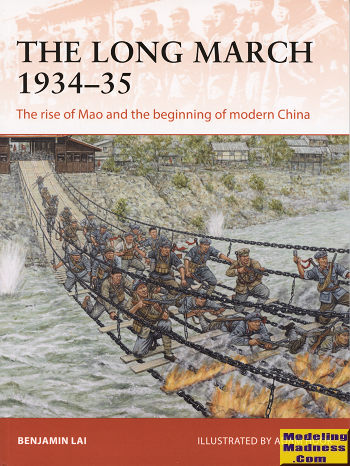 China
in the first half of the 20th century was a nation torn by internal strife. With
the end of the imperial rule in 1911, the Republic of China was established.
However, that was not really the sort of central government that was able to
exert control over such a large nation. Indeed, much of the country was
controlled by local warlords who offered only minimal loyalty and some were
outwardly hostice. There was also a rise in communism as helped along by the
Soviets once that nation was formed. This was probably the biggest threat to the
Chinese central government.
China
in the first half of the 20th century was a nation torn by internal strife. With
the end of the imperial rule in 1911, the Republic of China was established.
However, that was not really the sort of central government that was able to
exert control over such a large nation. Indeed, much of the country was
controlled by local warlords who offered only minimal loyalty and some were
outwardly hostice. There was also a rise in communism as helped along by the
Soviets once that nation was formed. This was probably the biggest threat to the
Chinese central government.
When Chiang Kaishek took over of the ruling party in
1926, he set forth a program to try to exterminate the communists. This was not
an easy task as the opposition had set up several areas of control, called
Soviets, all over the inner portions of China. These were back in the country
and away from the coastal areas generally controlled by the ruling Nationalists.
Without going into a great deal of detail, by 1933-34,
the Nationalists had built up a huge army, often well equipped and in some cases
very well trained by European mercenaries, many of whom were German. It was time
to make an effort to get rid of the communist armies. After the initial battles,
it became quite obvious that the communists could not defeat the National Army
in a head to head battle. Thus it was decided to retreat with what forces they
had even further back into the countryside. Thus began nearly two years of
tactical retreat.
In the communist army, decisions were made by committee
as much as anything else. Any soldier was able to make suggestions and at the
higher echelons, there was considerable debate over how to proceed when it came
to military action. It was the Politburo who eventually made the final decision,
a method that is still used today where the Chinese Army is under control of the
party and not the government.
There were basically four 'red' armies at the time. The
first and fourth were the largest and most powerful. Mao Zedong was in charge of
the first. He also had some of the best planners and his decisions on how to
operate were more often than not the correct one. This, as much as anything
else, propelled him into leadership positions and eventually overall leadership
of the communist Chinese.
This book takes what is, for most westerners, a very
confusing series of events and makes the whole campaign one that is fairly easy
to follow. As mentioned, the entire Long March was a tactical retreat. The red
army was constantly hounded by the Nationalist Army, however, what the
communists lacked in equipment, was made up by troop loyalty and imagination.
Situations where the Nationalists should have thoroughly trounced their
opponents turned out to be the opposite. Kaishek's leadership and those of many
of his generals was often shoddy and Kaishek was constantly meddling in the
campaign instead of letting his generals run the show. The result is that Mao
and his men were able to reach an area of safety and with the invasion of the
Japanese, both the Nationalists and communists joined forces until they were
removed from the country.
I very much enjoyed this one and learned a great deal.
One has to admire the way that the red Chinese were able to out-fox the
nationalists during what had to be an incredible experience for all involved. A
super book and one I can easily recommend to you.
June 2019
Copyright ModelingMadness.com. All rights reserved.
For more on the complete line of Osprey books,
visit www.ospreypublishing.com .
If you would like your product reviewed fairly and quickly, please
contact
me or see other details in the
Note to
Contributors.
 China
in the first half of the 20th century was a nation torn by internal strife. With
the end of the imperial rule in 1911, the Republic of China was established.
However, that was not really the sort of central government that was able to
exert control over such a large nation. Indeed, much of the country was
controlled by local warlords who offered only minimal loyalty and some were
outwardly hostice. There was also a rise in communism as helped along by the
Soviets once that nation was formed. This was probably the biggest threat to the
Chinese central government.
China
in the first half of the 20th century was a nation torn by internal strife. With
the end of the imperial rule in 1911, the Republic of China was established.
However, that was not really the sort of central government that was able to
exert control over such a large nation. Indeed, much of the country was
controlled by local warlords who offered only minimal loyalty and some were
outwardly hostice. There was also a rise in communism as helped along by the
Soviets once that nation was formed. This was probably the biggest threat to the
Chinese central government.